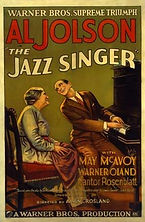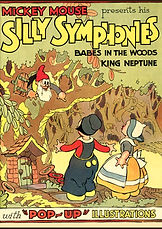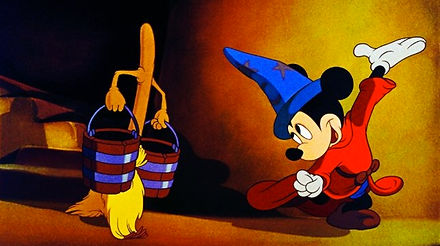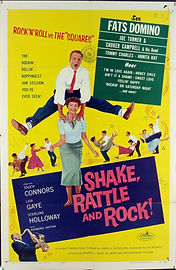
Lucy Armsby
G324 Advanced Portfolio
Candidate number: 8437
Other members of my group:
Kathryn Marshall
Annabelle Manning
Felicity Challender
The History Of The Music Video
Music videos have been around for many years, first being introduced during the 1920's. A music video is a moving image used to promote a particular artist or band, and emphasise thier music, to make it more personal to the audience. Music videos can also sometimes be called 'promotional devices' or 'promo's', making a particular song from an album very popular, pushing and persuading audiences and fans to buy the whole album, or the single. Below I am going to write about the history of the music video, showing you different examples of popular bands and artists with brought about the evolution of the music video.
1920's:
During the 1920's a type of music video was introduced. 1926 saw the development of 'talkies'. A talkie was a short film, showcasing a combination of different songs, all performed by different groups, artists and bands, also enhanced by dancers. 'Talkies' did not put emphasise on one particular band or artist, showing audiences a wide range, meaning there was something for everyone to enjoy. 'Talkies' were also mostly watched in cinemas, before the popularity of televisions came about.
One of the first most popular 'Talkie' music video was Al Jolsons 'Jazz Singer', which including Jolson singing different songs such as 'mammy'. 'Talkie' short music video/films were so popular that they brought in a lot of money within cinemas, and were a popular choice within audiences and fans of the singers.
Warner Bros Vitaphone was a sound system, used by many cinemas, to make the quality of their performances alot more high quality for that era. This would attract a lot more audiences, bringing in more money for the cinemas. Vitaphone was used for filming many 'Talkies', including 'Jazz Singer'.



1930's:
After the introduction of 'Talkies' the 1930's saw a lot more 'musical films' being produced. A musical is where songs are intwined into the film, this gives the music more of a storyline and makes it a lot more entertaining for all ages including children.
Different genres of music were also becoming a lot more popular such as Blues and classical. This is because of more dramatized performances which were also starting to become a lot more popular with audiences.
An example of a dramatized performance was by Bessie Smith 'Queen of the blues'. This was a performance of 'St Louis blues'. This was a dramatized performance, shown within a short film.


1940's:
The 1940's saw the first animated 'music video' type of video made. This was created by Walt Disney, this was 'Disney Fantasia', this is a film based around classical pieces of music. Fantasia was first released on the 13th november 1940. The film consists of 8 different film segments, including popular characters such as Mickey Mouse, all set to classical music constructed by Leopold Stokwolski. This is a musical which is very popular with both children and adults.
Walt Disney also made a wide range of shorter music videos. These were called 'Silly Symphonies'. These consisted of 75 different short videos showcasing different songs, however not with the conventional Disney characters such as Mickey Mouse, these videos used unique characters completely independant to that particualar video.
Examples of the 'Silly Symphonies' were 'Flowers and trees' , other examples are 'King Neptune' and 'Birds in the spring'. Above you can see images of the posters used to advertise these short music videos, also to the right you can see an image taken from Walt Disneys Fantasia, and also the original film poster.



To the right you can see the first 'Silly Symphony' to be produced. This is 'Skeleton Dance'. This was one of the only symphonys to be made in Black and white, because soon after, Walt Disney started using Technicolour, allowing their audiences to view the films in colour, bringing them to life and allowing the audience to appreciate them more. If you click on the play button to the left you will be able to view the video.
1950's:
1956 sees the rise of more 'Rock and Roll based music videos, from many different artists including Elvis Presley. There were also many more Rock and Roll music videos being produced such as, 'Shake, Rattle and Rock', 'Rock Pretty Baby' and 'Dont knock the rock'. These music videos consisted of around 8-12 songs each, all performed on a live stage.
Elvis Presley set off the main popularity of 'Rock and Roll', with many different hits including 'Hound Dog'.
1960's and 1970's:
During the 1960's bands such as the Beatles made music videos a lot more popular. Also the rise in popularity of the television, made viewing music videos a lot more easy, and helped to expose new artists and bands who would not have got recognition otherwise. The Beatles were a big influence to the modern music video era, making viewing music videos a lot more popular.
The Beatles also realeased a film, promoting thier first album, this was called 'A hard days night', directed by Richard Lester. Afterwards they started releasing more promotional videos, such as 'strawberry fields forever' and 'Penny lane'. These videos used many more advanced filming techniques such as dramatic lighting, and unusual camera angles to make the videos stand out compared to other artists and bands. These techniques helped them to portray the songs in a tastful and artful way.


1964 saw the arrival of the very popular Television show 'Top of the Pops' which first aired on the BBC channel in 1964 and ended in 2006. This was a show which showcased British chart music. This boosted music sales, because viewers would hear a song on the radio and would hope they would see it on Top of the Pops the next week. This was also a chance to showcase less well known artists and bands to help boost popular.


Apart from 'The Beatles' performing many different music videos, Queen holds the title of the first regarded music video with 'Bohemian Rhapsody'. At the time this was released on Top of the Pops, Queen was actually touring, meaning they missed the release.
Eventhough this music video became so sucessful, at the time it was considered 'radio un-friendly' being nearly 9 minutes long, and the record company assumed no radio would play the track.
1980's:
The 1980's saw the rise in more music videos which consisted of storylines, compared to just live performances being filmed. As well as more music videos containing storylines, there was also the launch of music channels such as MTV.
MTV was launched in 1981. This was a music channel which showcased popular music at the time. The first video to ever be aired was Buggles 'Video killed the radio star'. To the right of the paragraph you can see the original video.
During the mid 1980's music videos started to have more of a storyline. One of the most influential music videos with a storyline was Micheal Jacksons 'Thriller'. This video cost $500,000 to make, with the video itself being over 13 minutes long. It has also won awards such as the most influential pop music video of all time, also other awards such as Grammys and multiple MTV awards. Since the video has been made, it has sold over 9 million copies, making it one of the best selling songs of all time.
To the left you can see the whole 13 minute video to Micheal Jacksons 'Thriller'.
Modern Day:
Since the launch of MTV, there have been many more music channels released, showcasing specific genres of music, allowing all different sorts of bands to show their music and promotional music videos. Examples of these music channels are, VH1, Kerrang, Magic and Smash Hits, all of which show specific genres of music, for example Kerrang plays completely Rock and Metal music.
Aswell as these music channels, there is still MTV, which has expanded into many more MTV channels over the years, such as MTV Dance, MTV Base and MTV Rocks, once again playing specific genres of music. This gives audiences a lot more individuality and allows them to explore different genres, rather than being forced to watch one genre of music which they might not find appealing.
Also nowadays there is a lot more technology to help with watching music videos and buying music.
For example there was the launch of 'Youtube' in 2006 which allowed less well known artists to upload videos of them playing thier music for audiences to watch, this helped them to become a lot more recognised and potentially famous.
When it comes to buying music there has a also been many more advances meaning you have the choice whether or not you want a physical copy of the music. For example there is now itunes which allows you to buy whole albums or just specific songs all of which cost around £0.79-99p depending on the artist. This is one way of legally downloading music onto your phones and computers. However there are also many other sites which allow you to download music for free which are infact illegal music sharing websites. These websites such as 'Limewire' illegal share music files, meaning you can own the song for free, this then results in the artist or band losing out on a lot of money.

